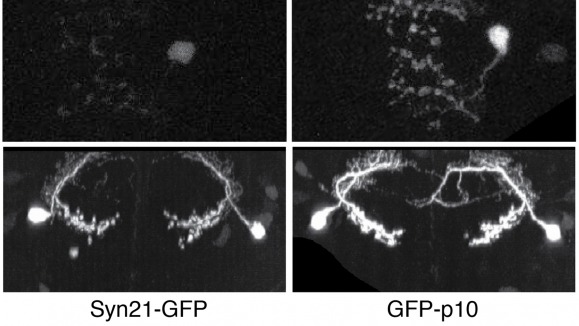In Pfeiffer et al. 2010, we describe an extensive set of experiments in which we empirically tested a wide range of modifications to the vectors and methods commonly used to direct exogenous gene expression in Drosophila. We were able to modulate the level of transgene expression by varying the strength of the activation domain carried by the transcriptional activator as well as the number of copies of its binding site and other properties of the reporter construct. We have also solved the problem of leakiness of the LexA operator in the absence of LexA protein and made the split-GAL4 and GAL80 intersectional strategies more robust. A complete list of available vectors and transformant fly lines is given in the Tools and Reagents section.
In other efforts to improve the tools available for genetic manipulation, Barret Pfeiffer and Aljoscha Nern identified several additional—but not cross-reacting—site-specific recombinases of the Flip/FRT family (see Nern et al. 2011).
In Pfeiffer et al. 2012, we describe a new set of vectors that utilize several well-characterized sequence elements derived from plant and insect viruses to increase the apparent translational efficiency of mRNAs by as much as 20-fold. These increases render expression levels sufficient for genetic constructs previously requiring multiple copies to be effective in single copy, including constructs expressing the temperature-sensitive inactivator of neuronal function Shibire(ts1), and for the use of cytoplasmic GFP to image the fine processes of neurons.
Select Publications
Nern A, et al
Pfeiffer BD, et al


